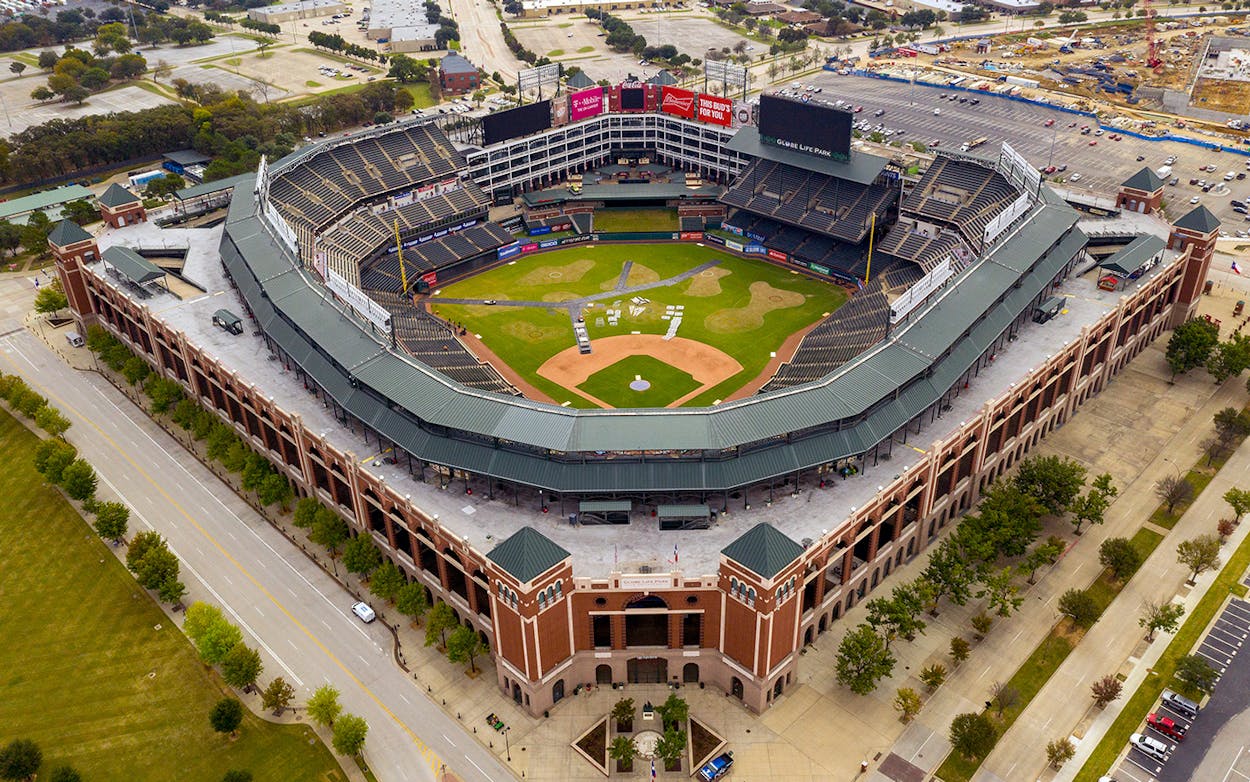When the Rangers demanded a new ballpark from the city of Arlington—under threat of relocating to Dallas, or potentially further afield—the team got one. The deal approved by the city’s voters was fairly egregious, even by the standards of bad stadium deals, but one consolation was a commitment that Globe Life Park would not be bulldozed after the team moves across the street to the forthcoming Globe Life Field after the 2019 season.
Since voters agreed to pony up as much as $1.675 billion in construction costs, loan interest, lost tax revenue, and giveaways for the new facility, the specific plan for the 1994 stadium has been an open question. Last week, we got a hint at its future when the XFL—the new iteration of the failed early-2000s pro-football league—announced Globe Life Park as the stadium where its North Texas team will play when the league debuts in 2020.
On Thursday, Arlington Mayor Jeff Williams announced an ambitious vision for the stadium beyond the XFL. According to the Fort Worth Star-Telegram, Williams imagines “dual towers” emerging from the sides of the stadium: one serving as an office space, the other serving as a high-rise condo building. He has similarly big ideas for the field space, which will likely be used by the XFL only a few days per year (in the league’s previous incarnation, each team played five home games per season). “When the XFL is not playing games, if people are living and working here, you could bring in temporary park furniture. You could bring in tree wells. We could make this the Central Park of this complex. That is the vision,” he said at a press conference. A planned concert appearance by Paul McCartney in June 2019, the first such event in the park’s history, offers another likely use for the venue.
Rangers COO Neil Leibman went so far as to describe the vision as “a city within a city,” where Globe Life Park, Globe Life Field, AT&T Stadium, and the Texas Live! complex (not to mention Six Flags) will comprise a walled-garden style live/work/play compound just south of Interstate 30.
Globe Life Park is still a fairly new stadium, and it served its original purpose well: The red brick facade had a classic feel, serving up the feeling of nostalgia that baseball thrives on, in one of the game’s best-designed parks. The amenities are modern enough that the XFL jumped at the chance to play there. (In Houston, the league’s franchise will play in TDECU Stadium at the University of Houston, which was built twenty years later.)
Considering the repurposing of other ballparks into parking lots (or structures maintained out of a sense of obligation and nostalgia, like the Astrodome), the Globe Life plan is promising. The XFL’s league has an uncertain future, given its brief first incarnation, competition from the NFL and NCAA, and a well-funded rival upstart league run by the son of the original XFL’s co-founder, but it’s a promising first step for the future of the stadium. It’s possible that there’s a long life for Globe Life Park as an office property (the Rangers already use portions of the park for that purpose) with a residential component attached, competing for events with AT&T Stadium and Texas Live!, hosting a handful of XFL games every year that the league exists, and using the field as an occasional green space for locals the rest of the year. If Arlington manages to pull that off, the $1.675 billion price tag for the new stadium may not be a bargain for taxpayers, but at least their former ballpark won’t go unused.








